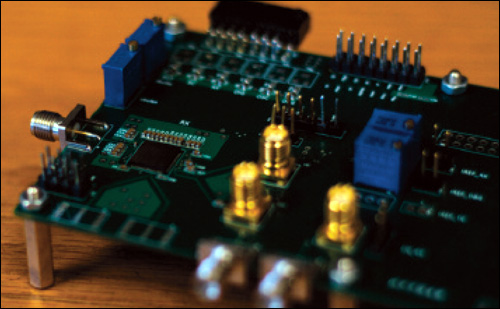Jun 24, 2015The United Nations Food Program estimates that roughly 50 percent of all the food produced in the world is never consumed. Much of it goes bad, in the supply chain, on grocery store shelves or in consumers' homes. Researchers at the VTT Technical Research Centre of Finland, a government-sponsored agency, are working on an early-warning system that could reduce waste by signaling when fresh food is beginning to spoil.
The VTT team—led by Himadri Sekhar Majumdar, an experimental physicist and senior scientist, and Thea Sipiläinen-Malm, a chemist and senior scientist—have developed a sensor that detects ethanol, which is emitted when fruits and other produce begin to spoil. The sensor is linked to a passive RFID transponder that can transmit information to a reader, which would pass it to a back-end system that could alert shippers or store managers to potential problems. The idea is to place the sensor in packaging. Majumdar, an expert in printed electronics, believes the sensor could be printed within the packaging in the future.

The team has worked on projects related to food spoilage in the past. The current research was carried out under the European Union's SusFoFlex project, which aims to foster the development of "smart and sustainable food packaging utilizing flexible printed intelligence and materials technologies." As part of the three-year project (2012 through 2014), 15 organizations from eight countries (Finland, Hungary, Ireland, Italy, Norway, Portugal, Turkey and Spain) developed packaging technologies aimed at improving the shelf life of fresh food.
The Finnish researchers linked their sensor to a passive Near-Field Communication tag. Since NFC is common in many smartphones, consumers could read the tag to find out if the food they were about to buy was fresh. But Majumdar told RFID Journal the sensor could also be linked to an active or passive ultrahigh-frequency tag.
The sensor can only indicate the absence or presence of ethanol above a certain threshold, which indicates the food is spoiled. The research team is working on a method to identify the level of ethanol in the package, so food that is just beginning to spoil could be consumed before it goes bad.
Researchers at Johns Hopkins University and MIT are also researching methods to detect spoilage through smart packaging. Majumdar declined to detail how the VTT approach is different, citing the need to patent its approach. The team hopes to commercialize the technology, but Majumdar believes for it to be truly viable, tag prices must come down.
"The biggest obstacle of using RFID tags on a product level is the price," Majumdar says. "Once the tags are cheap enough, there will be demand from the companies to use such technologies. This is one reason we would like to use printed technologies for manufacturing such tags, so we can push the price down further by using high-volume, high-speed production processes."
